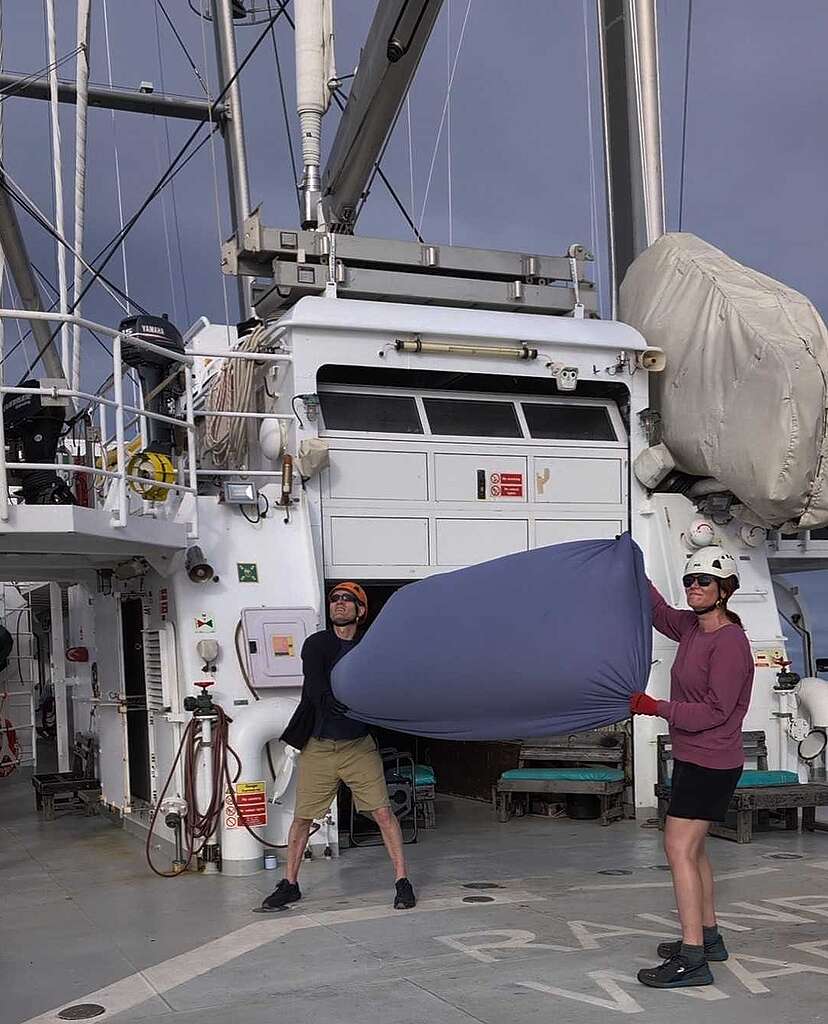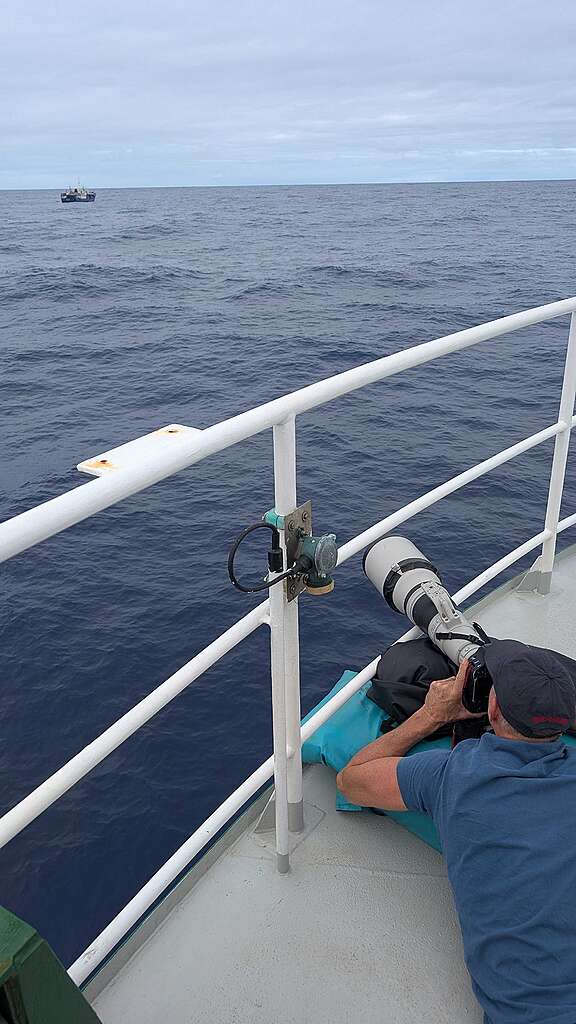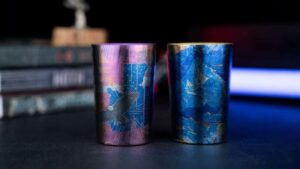Life at sea is always unpredictable, and the past week aboard the Rainbow Warrior has been a perfect reminder of that.
The Greenpeace Australia Pacific team and onboard crew have been navigating through an unusually long stretch of rough weather, with steady swells and heavy rolling with waves averaging three metres. According to the ship’s chief mate, it’s one of the longest periods of extreme conditions he’s seen on this vessel — and it’s certainly kept everyone on their toes.

Unfortunately, with the bad weather showing no signs of letting up, some of our plans have had to be put on hold for now. In typical fashion, though, the team has adapted quickly, shifting focus to find new opportunities. It’s a good example of how working at sea means constantly adjusting to whatever nature throws your way
Even with the setbacks, there’s been solid progress. The team is currently documenting the operations of several international fishing fleets working in the Lord Howe Rise and South Tasman (LoHST) region — a critical area for marine protection efforts.
Understanding how these fleets operate is an important step in demonstrating the need for this area to be protected from industrial fishing as a global ocean sanctuary. It’s been horrifiying to see sunfish, rays and sharks brought up so far, and equally alarming to see how close seabirds and whales have come to longlining vessels. This behaviour could indicate that seabirds and whales are being drawn in by baited hooks, which puts them at risk of being caught and accidentally hooked, as well as risking disruption to migration routes and behaviour.

One of the major concerns in these waters is longline fishing, a technique that involves laying out fishing lines that can run for up to 100 kilometres, lined with thousands of baited hooks. While longlining is intended to catch species like tuna and swordfish, it also captures a huge number of non-target species — sharks, turtles, seabirds, and other precious marine life. The impact on marine ecosystems is significant, especially in this area where many species are already under pressure.
By documenting longline operations, the team is helping shine a light on activity that often goes unnoticed in remote parts of the ocean. For now, the Rainbow Warrior and her crew are riding out the weather and continuing to gather information wherever possible. There’s never a dull moment out here, and more updates will follow as the mission continues.








